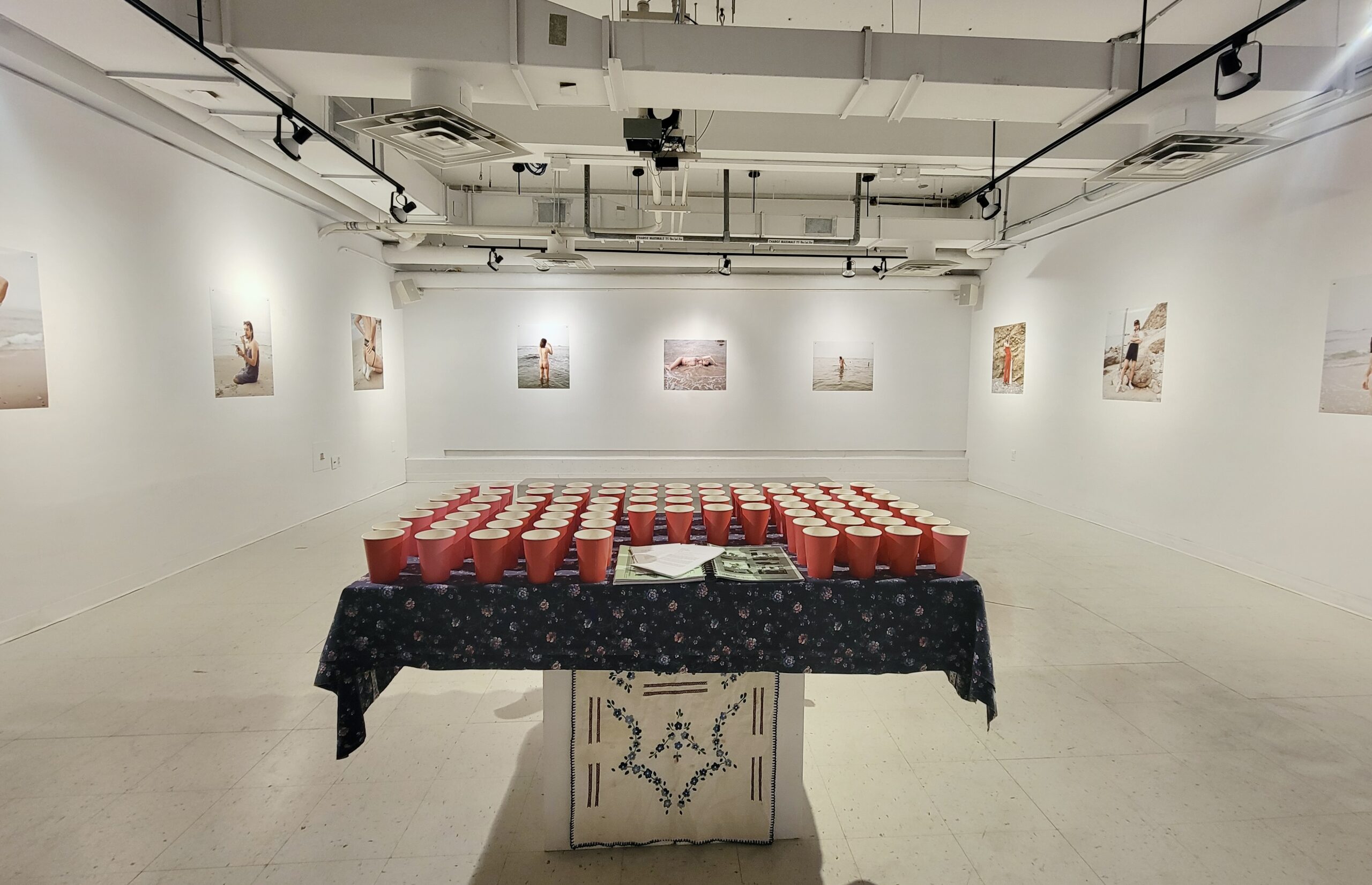Artist, poet, and “critical pedagogue”, Princex Naveed’s recent showcase “Jarring Lots” exhibited four multimedia installations that constituted the creation component of their MA thesis in Concordia’s INDI program.
Between Jan. 17 and Jan. 19, “Jarring Lots” was exhibited in Concordia’s MFA basement gallery in the Visual Arts building. Upon entering the gallery space during the opening night, visitors were met with a warm welcome with wine and refreshments from the artist, whose clear intention was to create a comfortable and open environment. Galleries are notoriously stuffy, quiet, and riddled with unspoken rules for proper behaviour, however, it was integral to Princex Naveed’s showcase that care was taken to resist these norms.
The gallery was filled with rich, ambient sound—an untitled, immersive soundscape work by Ghent-based filmmaker and poet, Helle Monne Huisman. The white-noise quality of the sound was a welcome rupture in the more familiar radio-silence of an exhibition space.
The central work in the gallery was their mixed-media installation titled “Tea, Sis!” A rectangular table was set up in the middle of the space, and was filled with red Solo cups—each with an individual tea bag. A small pile of didactic handouts were laid on the table for visitors, on which the artist had printed a statement about the work and the scholarly research that informed it, notably, the work of French writer and poet named Édouard Glissant.
“Tea, Sis! intends to counteract the sterility of the white cube by offering you a hospitable space, creating the potentiality for care_ful encounters between visitors and me,” the handout read. “The white cube” is a direct reference to Brian O’Doherty’s highly influential essay, “Inside the White Cube: The Ideology of the Gallery Space,” which offers criticism of the aesthetic of the gallery space as a pristine white void, and how this space impacts the viewing and value of art.
Lining the gallery walls were 9 printed photographs which documented a performance inspired by Canadian performance artist Sin Wai Kin. According to Princex Naveed, the performance “calls into question mainstream definitions of nationality and culture as well as their underlying gender norms.” Born to a Polish mother and an Irani father in northern Germany, and now based in Canada, Princex Naveed’s own personal history traverses numerous nations and identities, and this performance celebrates that state of flux.
Lastly, a cozy video installation titled “but i’d rather be a pickle than a cyborg-goddess” was situated in the corner of the gallery. The short video offered an intimate glimpse into the artist’s performative transformation into a dill pickle.
“It was both mundane and highly meaningful to me, as it has emerged convergently in multiple ecologies I call home (Turtle Island, Eastern Europe, the Middle East),” Naveed said.
